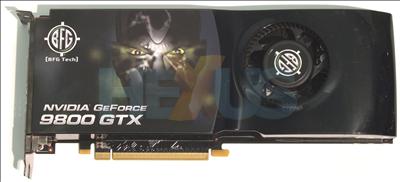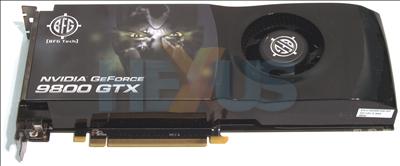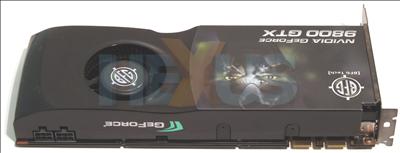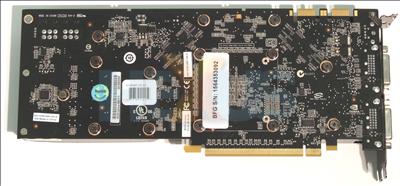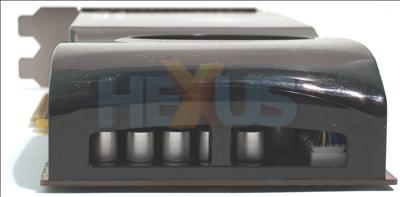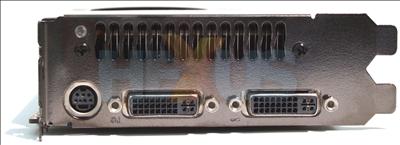A look at the BFG card
The BFG Tech. GeForce 9800 GTX operates at reference clocks - 675MHz for the engine, 1,688MHz for the shaders, and an effective 2,200MHz for the memory. We expect to see overclocked models in due course, knowing that GeForce 8800 GTS 512 card can scale to 700/1,700/2,000MHz with relative ease.
The heatsink and fan combination are enclosed by an appendage which is similar to that found on the GeForce 8800 GTS 512. The dual-slot-taking cooling is generally quiet under load; impressive considering that it's keeping the 160W TDP board operating at below 105°C.
NVIDIA's gained the know-how into cooling hot-running boards by designing for the 185W TDP GeForce 8800 GTX, some 18 months ago.
The PCIe 2.0 connector is dwarfed by the card, which measures 268mm x 111mm x 38mm (WxDxH) and weighs in at 700g - roughly the same size as the outgoing GTX and incumbent 9800 GX2, albeit 450g lighter than the twin-GPU monster.
For once, the cooler's aesthetic is, well, cool.
We can discern the high-end aspirations of the card by looking at the two six-pin PCIe power connectors on the left-hand side. The GeForce 8800 GTS 512's power requirement is a little lower, enabling the use of a single PCIe connector.
Looking at this side, we can also see the S/PDIF-in connector, where, as mentioned on the previous page, you would route your motherboard's audio into the card and out of the back, via DVI and an adapter, to your high-definition, flat-panel TV, for example.
Three-way SLI is courtesy of the two golden fingers - a la 8800 GTX and Ultra - on the right-hand side.
Twin dual-link DVI ports have become ubiquitous in the last two years. The mini-DIN socket is for TV-out only, though.






